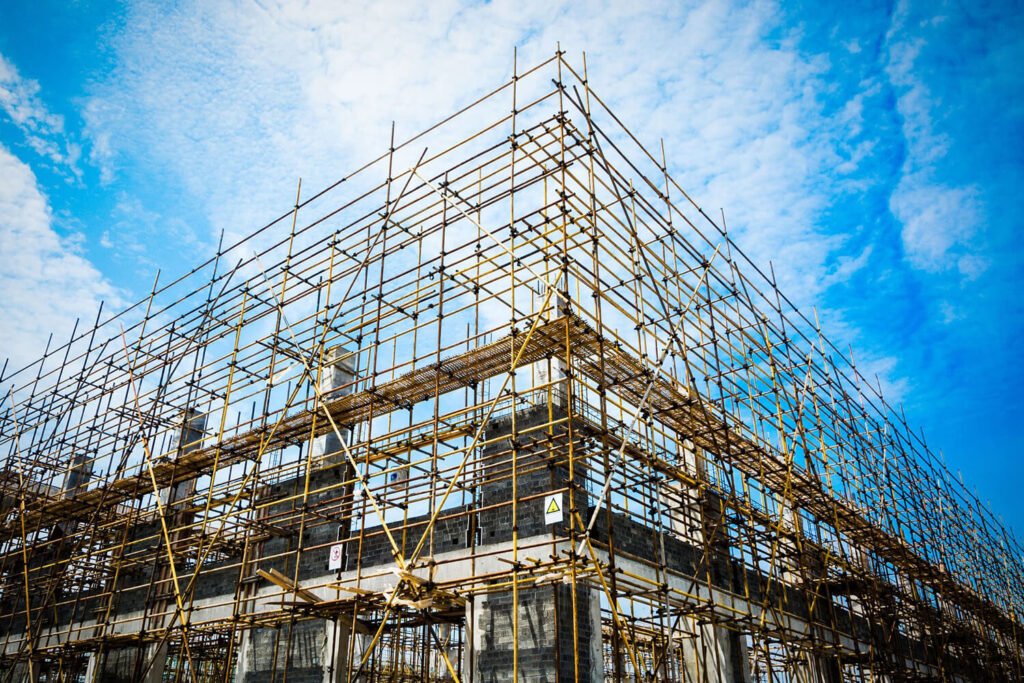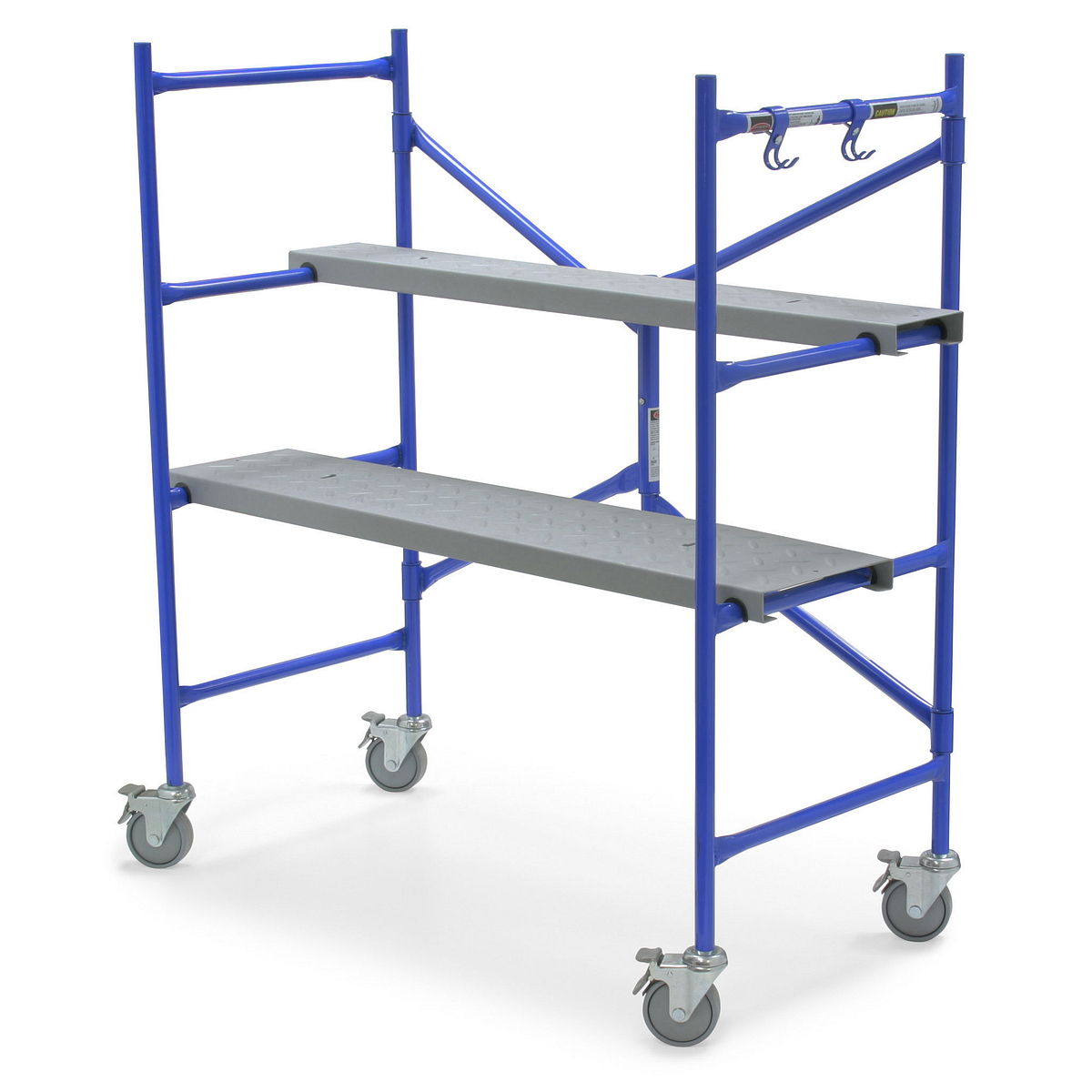Choosing a Local Scaffolding Company for Reliable and Timely Service
Choosing a Local Scaffolding Company for Reliable and Timely Service
Blog Article
Checking Out the Various Sorts Of Scaffolding Utilized in Building And Construction Jobs
The building market relies heavily on different types of scaffolding to fulfill details project demands, each offering distinctive benefits and applications. Typical framework scaffolding gives a sturdy structure for basic jobs, while suspended scaffolding is crucial for work on high-rise structures. Various other choices, such as system and rolling scaffolding, satisfy performance and mobility, respectively. Moreover, the cantilever variant confirms important in city settings where room is constricted. Comprehending the subtleties of these scaffolding kinds is important for optimizing security and efficiency on construction websites, motivating a better assessment of their unique characteristics and applications.

Traditional Structure Scaffolding
Typical framework scaffolding is among one of the most widely utilized techniques in the building and construction industry because of its effectiveness and versatility. This system contains vertical and horizontal frameworks that are set up to produce a stable system for materials and workers. The main components consist of upright messages, horizontal ledgers, and diagonal braces, which with each other offer a solid structure that can sustain considerable lots.
Among the essential benefits of conventional frame scaffolding is its flexibility to different building and construction projects, ranging from property buildings to huge commercial structures. The modular layout enables easy setting up and disassembly, making it reliable for both temporary and long-term projects. Additionally, the system can be customized in height and width, accommodating different building layouts and website problems.
Safety is vital in scaffolding applications, and typical framework systems are furnished with guardrails and toe boards to avoid drops and guarantee worker security. Normal inspections and adherence to safety and security guidelines are vital in keeping the stability of the scaffold (Scaffolding). On the whole, conventional framework scaffolding continues to be a fundamental choice in the construction market, giving a dependable platform for labor and boosting total project effectiveness

Suspended Scaffolding
Suspended scaffolding offers a distinct solution for building and construction jobs that require accessibility to raised surface areas, especially in circumstances where conventional framework scaffolding may be unwise. This kind of scaffolding is generally put on hold from the roofing system or top levels of a framework, making use of a system of platforms, ropes, and sheaves to develop a working space that can be readjusted to various heights.
One of the main advantages of put on hold scaffolding is its flexibility. It can be easily rearranged or reduced to fit adjustments in building and construction needs, making it perfect for tasks such as window setup, frontage work, and maintenance on skyscrapers. Furthermore, the marginal footprint of put on hold scaffolding permits far better use of ground space in city atmospheres, where room is typically minimal.
Safety and security is a vital factor to consider in making use of suspended scaffolding. Appropriate rigging and securing systems need to be utilized to make sure security and prevent mishaps. Operators should likewise be learnt the secure usage of this equipment. On the whole, put on hold scaffolding offers a effective and efficient solution for accessing hard-to-reach areas in various construction situations, boosting both productivity and safety and security on site.
System Scaffolding
System scaffolding, frequently considered a contemporary option in the scaffolding market, includes pre-engineered components that can be quickly assembled and adjusted for various building and construction tasks. Scaffolding. This sort of scaffolding is identified by its modular style, which allows for adaptability and effectiveness on job sites, suiting various elevations and structural needs
Commonly made from high-strength steel or light weight aluminum, system scaffolding provides improved durability and stability. The elements consist of vertical posts, horizontal journals, and diagonal braces, which adjoin securely, making certain a durable framework. The layout usually includes standard installations, simplifying setting up and disassembly processes, therefore decreasing labor time and prices.

Rolling Scaffolding
Moving scaffolding is a flexible choice to conventional fixed scaffolding, created for flexibility and go to this website convenience of use on building websites. This kind of scaffolding is composed of a system sustained by structures with wheels, permitting employees to quickly relocate it as needed. The mobility feature considerably improves performance, as it lessens downtime connected with setting up and taking apart repaired scaffolding.
Normally created from light-weight products such as light weight aluminum or steel, rolling scaffolding provides a durable yet portable solution for tasks calling for regular repositioning - Scaffolding. It is particularly beneficial in tasks such as paint, drywall setup, and electrical job, where accessibility to various heights and locations is essential
Security is critical in rolling scaffolding layout, with features such as securing wheels to avoid unexpected activity when being used, and guardrails to shield workers from drops. In addition, lots of models are adjustable in elevation, accommodating various task demands.
Cantilever Scaffolding

The style of cantilever scaffolding usually entails utilizing braces or arms anchored to a structure or structure, enabling the system to expand outside safely. Safety and security is vital; thus, these scaffolds must be crafted to endure various tons and environmental conditions. Normal inspection and maintenance are necessary to guarantee structural stability and why not try here employee security.
Cantilever scaffolding is preferred for its convenience and effective use of room, making it a preferred option in city atmospheres where space restraints prevail. Additionally, it promotes much easier access to high altitudes, ultimately contributing to the general performance of construction tasks. Just like all scaffolding visite site kinds, proper training and adherence to safety and security standards are essential for employees making use of cantilever scaffolding.
Conclusion
Finally, the varied sorts of scaffolding utilized in building and construction jobs each offer unique functions customized to particular site demands. Standard frame scaffolding supplies stability, while put on hold scaffolding uses adaptability for elevated jobs. System scaffolding promotes quick assembly, and rolling scaffolding enhances mobility for differing job environments. Cantilever scaffolding efficiently attends to challenges in city settings. Recognizing these scaffolding types is necessary for maximizing safety and performance in building, ultimately contributing to the effective conclusion of jobs.
Standard framework scaffolding gives a strong structure for general jobs, while put on hold scaffolding is important for job on skyscraper frameworks.Rolling scaffolding is a versatile alternative to traditional set scaffolding, developed for flexibility and ease of usage on building and construction websites. As with all scaffolding types, proper training and adherence to security criteria are crucial for employees utilizing cantilever scaffolding.
Traditional frame scaffolding gives security, while put on hold scaffolding uses convenience for elevated tasks. System scaffolding promotes quick setting up, and rolling scaffolding improves movement for differing job settings.
Report this page